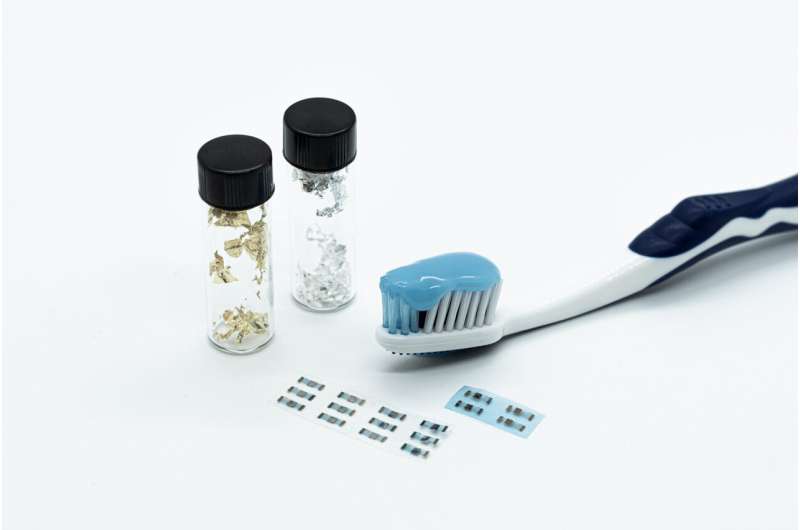
A toothpaste-based transistor is the latest innovation from the research team at the Istituto Italiano di Tecnologia (IIT-Italian Institute of Technology) in Milan, which pushes the boundaries of edible electronics. This innovative nano-device is expected to become a key component of future smart pills, designed to monitor health conditions from within the body and then safely dissolve after completing their function. The research findings have been published in the journal Advanced Science.
Several commercial toothpaste formulations contain crystals of copper phthalocyanine, a blue pigment that acts as a whitening agent. This substance is deposited on the teeth, functioning as an optical filter to enhance their whiteness.
Throughout the day, copper phthalocyanine is gradually removed by saliva and ingested. The research team at IIT’s Center for Nano Science and Technology (CNST) in Milan (Italy) investigated the properties of this substance in collaboration with a dental researcher from the University of Novi Sad in Serbia. Through laboratory simulations and analysis of existing clinical data, they determined that, on average, humans inadvertently ingest about 1 milligram of copper phthalocyanine each time they brush their teeth.
“With the amount of copper phthalocyanine we ingest daily, we could theoretically manufacture approximately 10,000 edible transistors,” says Elena Feltri, the paper’s lead author and a doctoral student at IIT’s CNST in Milan.
Actually, an intriguing aspect of this pigment is its chemical structure, which facilitates charge conduction within its crystals, making copper phthalocyanine an excellent candidate for use as a semiconductor in organic electronics applications.

The research team integrated small amounts of this new ingredient as a semiconductor into an already tested recipe for building edible circuits. The circuits are constructed on an ethylcellulose substrate, with electrical contacts printed using inkjet technology and a solution of gold particles, which are commonly used in culinary decoration.
A “gate” made from an electrolytic gel based on chitosan—a food-grade gelling agent derived from crustaceans like blue crabs—enables the transistor to operate at a low voltage of less than 1V.
This edible transistor was developed in the Printed and Molecular Electronics laboratory led by Mario Caironi and follows the invention of an edible battery by the same group last year. Caironi’s lab is dedicated to exploring the electronic properties of food and its derivatives, aiming to develop edible electronic devices for future applications in health care and quality control within the food industry. Moreover, since 2021, his team has been involved in the European RoboFood project, which aims to develop edible robots.
The research group’s next step will be to identify other edible substances with suitable chemical and physical properties to create an intelligent, edible electronic device to use for health care applications, such as monitoring body parameters within the gastrointestinal tract.
More information:
Elena Feltri et al, A Fully Edible Transistor Based on a Toothpaste Pigment, Advanced Science (2024). DOI: 10.1002/advs.202404658
Provided by
Italian Institute of Technology
Citation:
An edible toothpaste-based transistor (2024, September 26)
retrieved 26 September 2024
from https://phys.org/news/2024-09-edible-toothpaste-based-transistor.html
This document is subject to copyright. Apart from any fair dealing for the purpose of private study or research, no
part may be reproduced without the written permission. The content is provided for information purposes only.


